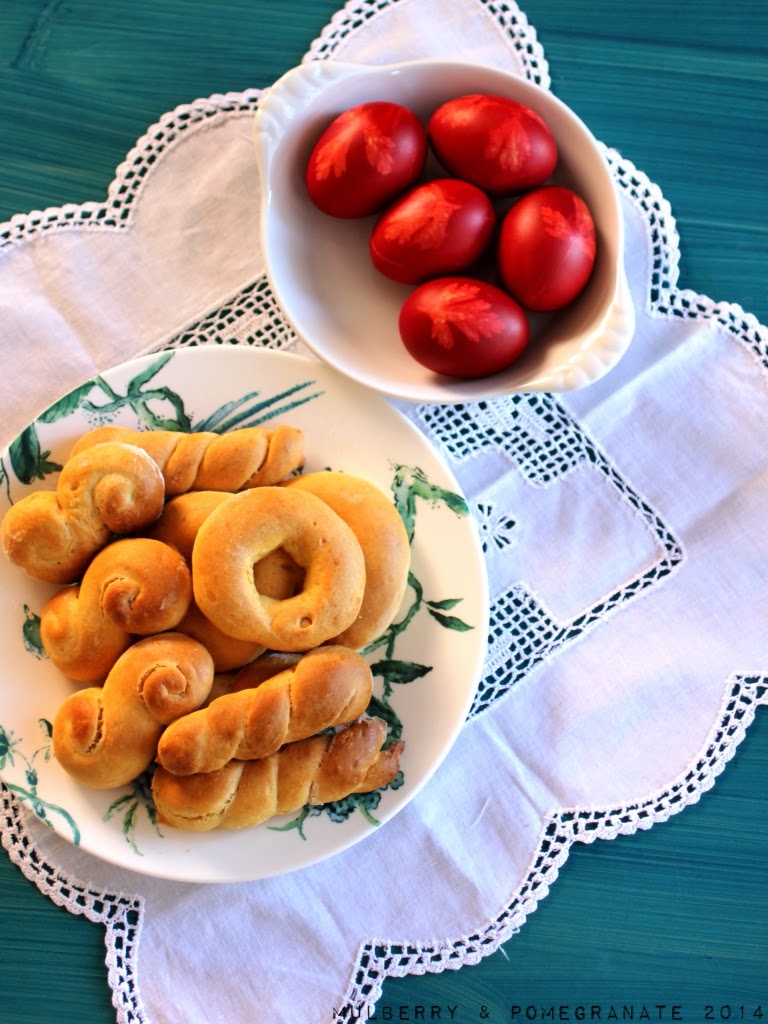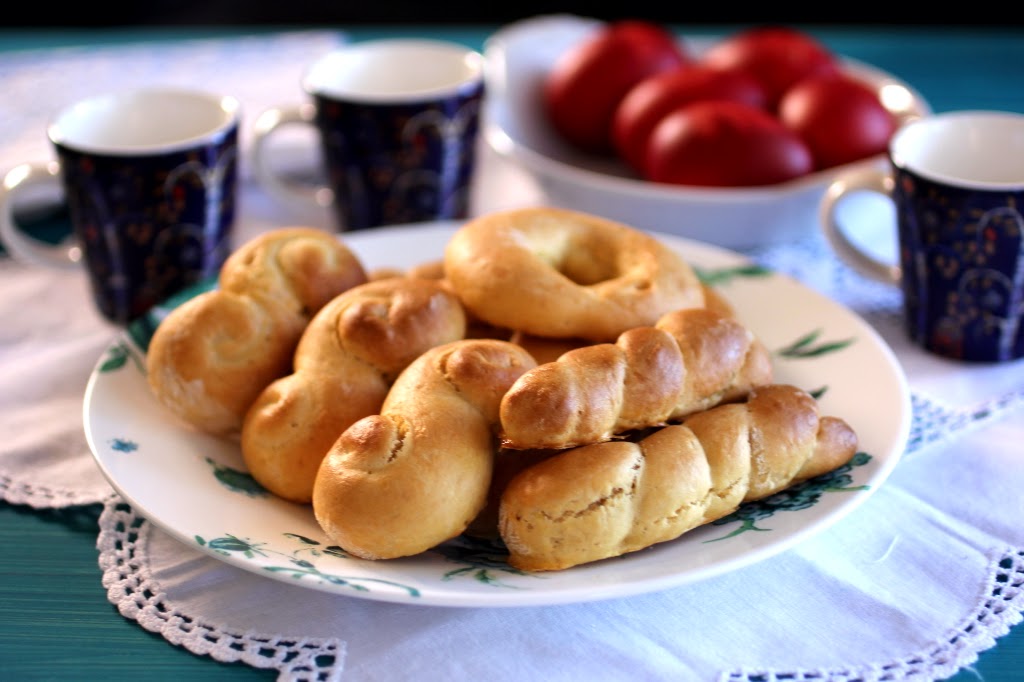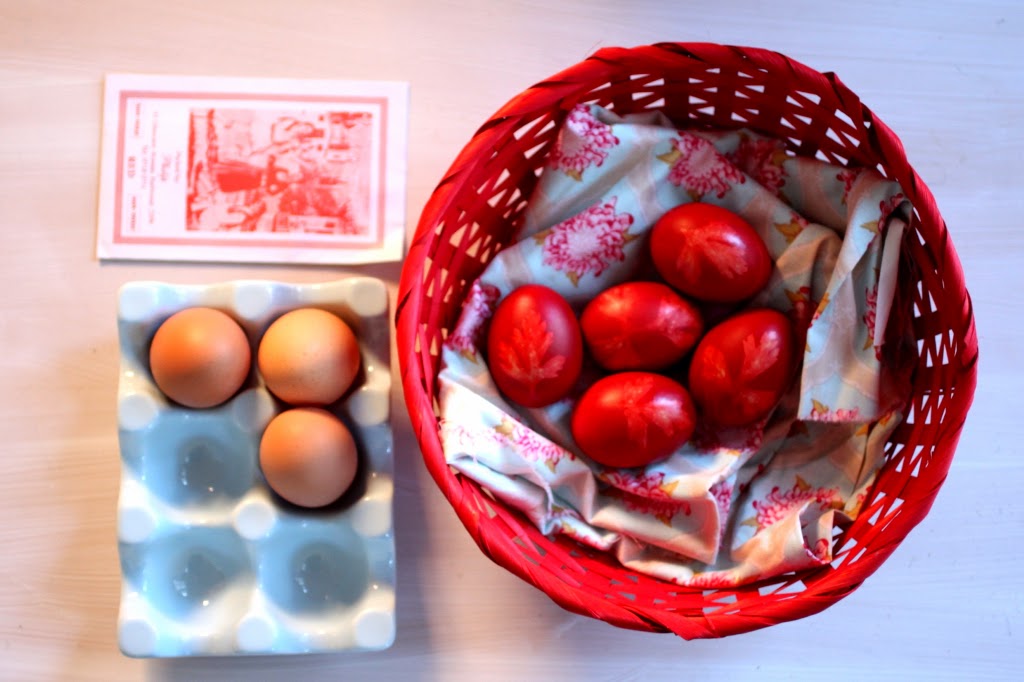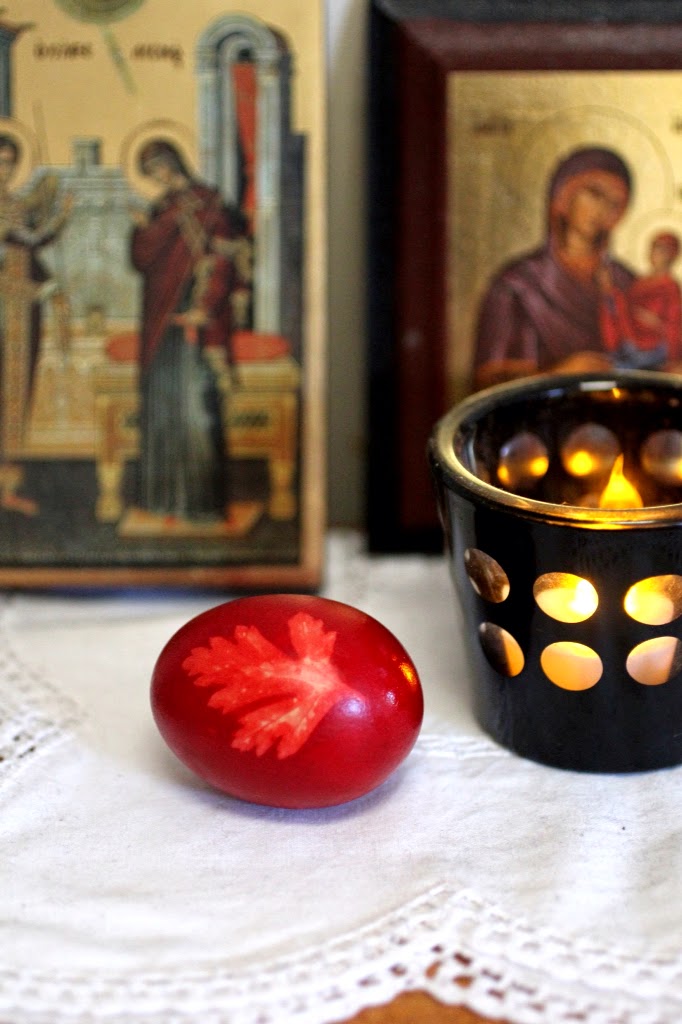
Once again, I can't believe how quickly Easter has arrived this year. It seems like Christmas has only just finished and another celebration is upon us already. In Greece, at the end of last year, I was given a recipe for koulourakia, a traditional Greek Easter biscuit, made to be eaten after Holy Saturday. I have really enjoyed the koulourakia that my mother in law makes each year, and this year I was excited to have an attempt at making my own. Traditionally, koulourakia are made on Holy Thursday, along with red eggs (kokkina Avga) and Tsoureki, Greek Easter Bread.
Koulourakia are a butter based cookie, and come in certain traditional shapes (including a braid, a figure eight, a 'lifebuoy' circle and an s-shaped 'snake' cookie with two swirls at either end). Traditionally, the first cookie that is made is an "X" to represent the Greek word for Christ, and the last shape is in an "A" - representative of the Greek word "anesti" meaning risen. The cookies have a very subtle sweetness and a hint of vanilla.
The recipe I was given for Koulourakia used (very non traditional) margarine and lots of lemon zest and juice. We haven't been able to try them yet - we are waiting for Easter Sunday, however Mr K has guaranteed that they smell right and look right!! I'll have to give you a post-script on the actual taste! If you decided to make some Koulourakia for your Easter they are best enjoyed with morning coffee or afternoon tea. Dunking is encouraged!
Koulourakia Paskalina
3 organic eggs, separated
3/4 cup, organic caster/superfine sugar
125g butter (or you can use the suggested margarine)
3 dessert spoons vanilla extract
1 large lemon, juice & zest
1/2 teaspoon of baking powder
1/2 teaspoon of baking soda
1/2 cup milk
1/2 kg of plain flour
1 extra egg for glaze
Method:
1. Preheat oven to 200C and line two large baking sheets with baking paper.
2. In a mixer (or with a handheld mixer) beat together butter/margarine and sugar until very pale and fluffy.
3. In another bowl, beat egg yolks until smooth. Gradually add to the butter and sugar mixture, mixing well.
4. In another bowl, beat egg whites until stiff peaks form.
5. Combine both mixtures by folding in the egg whites. Then add the vanilla, lemon juice and zest.
6. Dissolve baking powder & soda in the milk.
7. Sift flour.
8. Gradually add milk mixture and flour mixture to the egg mixture, alternating each and knead into a dough.
9. Take about a teaspoon & a half of dough and roll into a 20cm long sausage on a floured board. Form into desired shape and place in lined baking sheet.
10. Mix egg with 2 teaspoons of water and brush onto cookies, bake for around 20 mins until golden. Remove from oven and leave on baking sheets to cool for 10mins before placing on a cooling rack.
Kokkina Avga (red eggs)
1 sachet powdered red dye for eggs
1 cup boiling water
Warm water, to cover
12 eggs, at room temperature
1 cup white vinegar
Olive oil, to polish
Method
1. Carefully scrub each egg under cold running water to remove any dirt. Using a sponge dipped in water, moisten the herbs and stick to the eggshell. Place egg in a piece of clean stocking and secure at each end with a knot or string.
2. In a separate bowl, add dye to 1 cup of boiling water and mix well to dissolve.
3. Place the eggs, in a single layer and cover in warm water. Rest for 10 mins.
4. Add dye to eggs and water. Place on the heat and bring to the boil. Lower heat to medium and simmer, uncovered, for 15 mins.
5. Remove from heat and add 1 cup of white vinegar.
6. Using disposable gloves, lift each egg out of the dye and place in egg cartons to cool and dry. Once cooled completely, remove stocking and use a clean cloth with olive oil to lightly oil and polish the eggs. Return to egg carton and set aside to dry before handling.
Following tradition, in our house we place the first-dyed red egg at our iconostasis (place where icons are displayed) to ward off evil for the coming year. The rest of the eggs will be used on Easter Sunday for the game of ‘Tsoungrisma’ (meaning clinking together) which involves picking your egg of choice from the basket, holding it in your first and clinking the ends of your egg against each other person's egg. The winner is the one person whose egg survives intact and they are guaranteed good luck for the year ahead.
POSTSCRIPT - both the cookies and the eggs got the seal of approval!






Looks wonderful! Have a happy easter!
ReplyDeleteThank you, hope you also had a fabulous Easter!!
DeleteFunny enough Greek Eastern is this year on the same date as Western eastern. Kaló Pascha.
ReplyDeleteThank you, hope you had a wonderful Easter too!
DeletePretty eggs and work of art! Bravo!
ReplyDeleteJulie
Gourmet Getaways
Thanks Julie
Delete